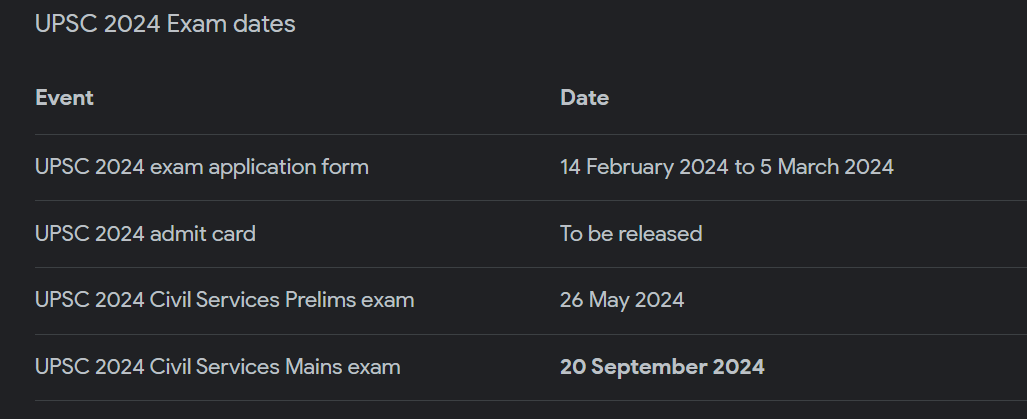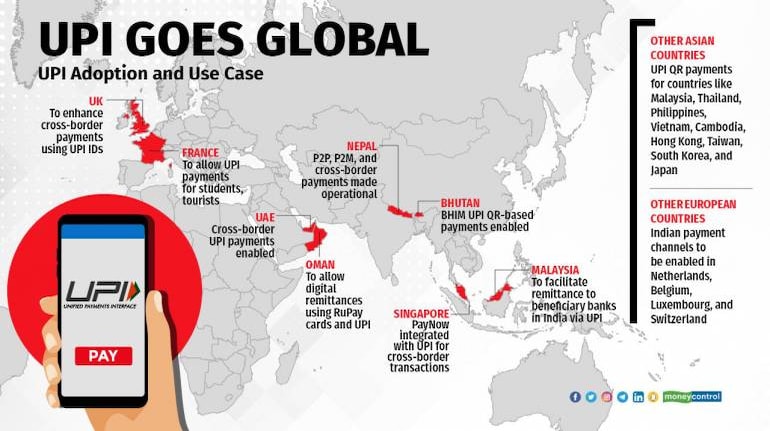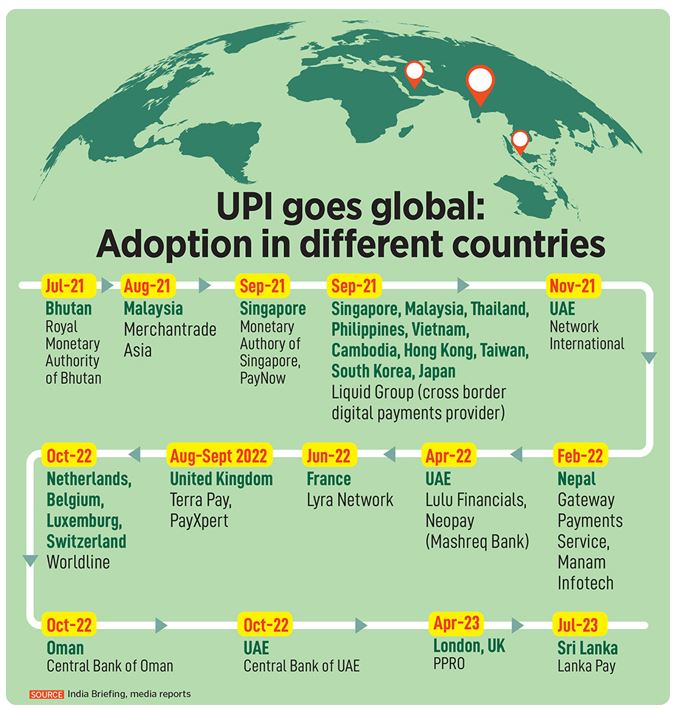|
|
||
|
13 March 2024 |
||
|
- States adhere to the Constitution when appointing Deputy Chief Ministers, ensuring compliance with constitutional provisions.
- Event Horizon Telescope (EHT) approves Black Hole Shadow
- India’s UPI and RuPay Card Services Go Global
- Law Commission’s Report on Epidemic Diseases Act, 1897

- States adhere to the Constitution when appointing Deputy Chief Ministers, ensuring compliance with constitutional provisions.

Introduction:
Recently, the Supreme Court rendered a decision dismissing a petition contesting the appointment of Deputy Chief Ministers in States, asserting that such appointments are in accordance with the Constitution.
This decision has stirred debates surrounding the roles, powers, and concerns associated with Deputy Chief Ministers in state governments.
Understanding the Deputy CM Position:
- The Deputy Chief Minister position differs significantly from constitutional roles such as that of the Vice President of India.
- Its origins can be traced back to the establishment of the Deputy Prime Minister position in 1947 after independence, which eventually led to the emergence of Deputy CM roles in various states.
- These appointments are made and revoked at the discretion of the Chief Minister, who may choose to appoint multiple Deputy CMs.
Historical Context:
- Anugrah Narayan Sinha of Bihar holds the distinction of being the first Deputy CM post-Independence.
- As of July 2023, 12 states in India have Deputy CMs, underscoring the growing prevalence of this role in state administrations.
Powers and Responsibilities:
- Deputy CMs enjoy a status akin to cabinet ministers, with corresponding remuneration and privileges.
- While they are entrusted with portfolios, these are typically of a smaller scale compared to those held by the Chief Minister.
- Financially, they lack specific authority and must seek approval from the Chief Minister for expenditures exceeding allocated budgets.
- Administratively, they serve as a liaison between the ruling party and its allies, facilitating governance and administration.
Significance of Deputy CMs:
- Deputy CMs play a crucial role in fostering political stability within coalition governments by bridging gaps between ruling parties and their allies, thereby reducing incidents of anti-defection.
- Moreover, their presence ensures better representation of diverse communities, which enhances public trust in governance.
- Additionally, Deputy CMs serve as potential successors to the Chief Minister, thereby promoting transparency and accountability in government.
Concerns and Suggestions:
- The absence of constitutional backing for the position raises concerns regarding role ambiguity and the potential for exploitation by Chief Ministers.
- Furthermore, the lack of a limit on the number of Deputy CMs appointed can lead to appeasement and governance complexities. The overlapping roles with cabinet ministers may also complicate governance and administration.
Future Perspectives:
- To address these concerns and streamline governance structures, there is a pressing need for a defined role and limitations for Deputy CMs.
- Additionally, enhancing political literacy among citizens regarding the functions and responsibilities of Deputy CMs is essential for informed governance.
- Event Horizon Telescope (EHT) approves Black Hole Shadow

Introduction
- Recent scientific revelations have illuminated fresh insights into a colossal black hole positioned 53 million light-years away, initially captured through the remarkable efforts of the Event Horizon Telescope (EHT) in the year 2017.
- This groundbreaking accomplishment not only marks a significant milestone in astronomical observation but also serves to authenticate a pivotal prediction stemming from Einstein’s theory of general relativity.
Key Findings by EHT
- Subsequent to the initial discovery, the latest data obtained through enhanced telescope coverage and resolution reaffirms the previous identification of the black hole’s enigmatic ‘shadow’.
- These findings unequivocally corroborate the existence of an asymmetric ring structure, which aligns harmoniously with the anticipated gravitational lensing effects.
- Moreover, meticulous observations have unveiled a persistent ring formation process over time, with subtle fluctuations hinting at variations within the magnetic field configuration.
About Event Horizon Telescope (EHT)
Description
- The Event Horizon Telescope (EHT) constitutes a substantial array of telescopes distributed globally, united in the pursuit of scientific inquiry through Very-long-baseline interferometry (VLBI).

Resolution
- EHT boasts an impressive resolution capability of 25 micro-arc-seconds, enabling detailed scrutiny of celestial phenomena.
Collaboration
- This endeavor stands as a testament to international collaboration, boasting over 300 members and spanning 60 institutions across 20 countries and regions.
Launch Year
- Initiated in 2009, the Event Horizon Telescope (EHT) has since been dedicated to unravelling the mysteries of the cosmos.
First Image Published
- The milestone moment arrived on April 10, 2019, with the publication of the first-ever image depicting a black hole, notably M87*.
Objective
- The primary objective of the Event Horizon Telescope (EHT) revolves around the meticulous observation of astronomical entities, particularly those akin to supermassive black holes’ event horizons.
Key Targets
- Among the primary targets of scrutiny are prominent black holes, including M87* and Sagittarius A* (Sgr A*), emblematic of the EHT’s ambitious scope.
Recent Developments
- Significant recent milestones include the unveiling of the first image of a black hole in March 2021, followed by the debut image of Sagittarius A* (Sgr A*) on May 12, 2022.
Reconstructive Algorithms
- The EHT employs sophisticated algorithms such as the CLEAN algorithm and regularized maximum likelihood (RML) algorithm to reconstruct and interpret observational data.
Scientific Implications
The implications of EHT’s endeavors extend far beyond mere observation, encompassing the validation of general relativity, precise measurements of black hole mass and diameter, and the in-depth study of accretion processes, shedding light on fundamental cosmic phenomena.
- India’s UPI and RuPay Card Services Go Global

Context:
- In a landmark development, Prime Minister Narendra Modi, alongside the President of Sri Lanka and the Prime Minister of Mauritius, collectively launched the Unified Payments Interface (UPI) services in Sri Lanka and Mauritius.
- The Unified Payments Interface (UPI) represents a significant advancement over the Immediate Payment Service (IMPS), enabling instantaneous, round-the-clock transfer of funds between bank accounts.
- UPI consolidates multiple bank accounts into a single mobile application, offering users seamless transactions across participating banks. Its notable attributes of simplicity, security, and interoperability have revolutionized the digital payments landscape.
Key Features and Benefits:
1. Instant Transactions: UPI facilitates swift transactions, ensuring rapid settlements for various purposes such as splitting restaurant bills or paying utility bills.
2. Mobile-Centric: With a simple app or USSD code (*99#), users can access their bank accounts on mobile devices, eliminating the need for physical cards or extensive paperwork.
3. 24×7 Availability: UPI operates continuously, including weekends, catering to users with diverse schedules.
4. Security Measures: Robust security measures such as two-factor authentication, PINs, and biometrics ensure secure transactions, instilling confidence among users.
5. Seamless Integration: UPI seamlessly integrates with diverse services such as bill payments, online shopping, and donations, with QR codes simplifying merchant payments.

Impact on Financial Inclusion:
UPI has significantly enhanced financial inclusion by:
1. Empowering Rural Areas: UPI adoption extends to remote villages, benefiting vendors, farmers, artisans, and small businesses.
2. Promoting Financial Literacy: UPI serves as a catalyst for financial literacy, educating individuals about banking, digital security, and budgeting.
Impact:
1. Handling Over 100 Billion Transactions: UPI recorded more than 100 billion transactions in the previous year.
2. GEM Trinity Contributions: Transactions valued at Rs 34 lakh crores (approximately 400 billion USD) were facilitated through the integration of bank accounts, Aadhar, and mobile phones.
- Law Commission’s Report on Epidemic Diseases Act, 1897

Context:
The 22nd Law Commission of India has submitted Report No. 286 titled “A Comprehensive Review of the Epidemic Diseases Act, 1897” to the Government of India.
Epidemic Plan and Standard Operating Procedure:
- The 286th Law Commission Report emphasizes the necessity of establishing an Epidemic Plan and Standard Operating Procedure (SOP) to effectively address future epidemics.
- It highlights the current lack of clear delineation between the powers of the Centre, states, and local authorities during epidemics, leading to disjointed responses that hinder effective management.
- The Epidemic Plan aims to ensure a coordinated response to public health emergencies by clearly defining the powers and responsibilities of various levels of government and stakeholders.
Limitations of the Epidemic Diseases Act, 1897 (EDA):
- The report assesses the Epidemic Diseases Act, 1897 (EDA), noting its inadequacy in addressing modern challenges posed by infectious diseases.
- It observes that the EDA, originating from the colonial era, fails to adequately address contemporary issues related to infectious diseases, particularly in the context of globalization and increased connectivity.
- The report identifies the potential misuse of the EDA and its lack of comprehensive guidelines on crucial aspects of epidemic management, suggesting substantial amendments or the enactment of new legislation.
Recommendations for Improvement:
– The Law Commission proposes significant amendments to the EDA to ensure its relevance and effectiveness in addressing current and future challenges posed by infectious diseases.
– It suggests incorporating provisions in the EDA to mandate the preparation, enforcement, and periodic revision of the Epidemic Plan, along with clear guidelines on quarantine, isolation, lockdowns, and other measures.
– Additionally, the report recommends provisions for privacy-friendly disease surveillance, regulation of medical supplies, dissemination of public information, and safe disposal of infectious waste, among other essential aspects of epidemic management.
– To mitigate conflicts between states and the Central government, the report advocates for the creation of an SOP outlining the roles and powers of various stakeholders at each stage of an epidemic, ensuring a coherent and unified response.
Law Commission:
- The Law Commission of India is an executive body established by the Government of India to work for legal reforms.
- It operates as an advisory body to the Ministry of Law and Justice, comprising primarily legal experts.
Functions of the Law Commission:
- Conducts research and reviews existing laws in India for reforms and new legislation, either on government reference or suo-motu.
- Undertakes studies to improve justice delivery systems, aiming to reduce procedural delays and litigation costs.
- Identifies and recommends the repeal of obsolete laws and examines laws impacting poverty alleviation.
- Proposes new legislation to implement Directive Principles and achieve constitutional objectives.
- Advises on legal and judicial administration matters referred by the government.
- Provides research assistance to foreign countries as requested by the government.
- Reviews laws to promote gender equality and suggests amendments.
- Examines the impact of globalization on food security and unemployment, recommending measures for marginalized communities.
- Submits periodic reports to the Central Government on various legal issues and research findings, proposing effective measures.
- Performs additional functions assigned by the Central Government as needed.



